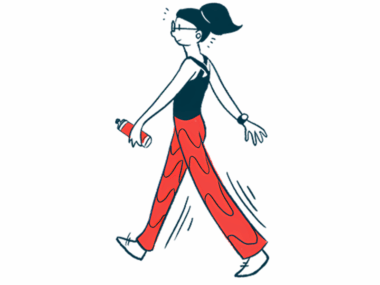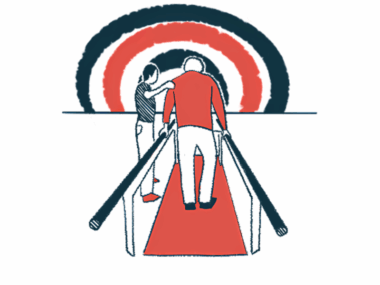Wearable ‘Neural Sleeve’ Counters Foot Drop, Aids Mobility in Study
Written by |

People in a Neural Sleeve gait study were reported to show an “average improvement” of 143% in foot drop, a common symptom of multiple sclerosis (MS) and other conditions that hinder mobility, its developer, Cionic, reports.
The wearable “bionic” device — which analyzes, predicts, and augments a person’s movement — is designed to help people with such conditions move about with greater ease and independence.
Results from this San Francisco-area study and other tests are expected to support a planned application to the U.S. Food and Drug Administration for the right to market Neural Sleeve, Cionic reported.
If approved, the sleeve may be the first algorithm-powered bionic clothing to help in restoring mobility to people with neurological conditions.
“This is a huge milestone for the company,” Jeremiah Robison, Cionic‘s founder and CEO, said in a press release. “So much invention and hard work has gone into this first product, and we cannot wait to bring it to the many people living with a gait impairment.”
Foot drop, which is caused by ankle weakness largely due to a slowing or block in communication between nerves in the brain and the foot, is common in people with MS and disorders such as stroke and cerebral palsy.
The condition occurs when a person cannot lift their toes normally when taking a step. Rather, the toes drop, dragging on the ground, making trips and falls more likely while walking, particularly on uneven surfaces such as stairs.
Many people compensate by lifting their foot higher when walking, but this can be tiring and lead to back and hip pain, which may make patients even more unstable. Foot drop also can make other aspects of everyday life more challenging, including driving.
The device, worn like a sleeve on a person’s lower leg, uses advanced algorithms to “read” the signal sent from the brain to muscles, and is able to predict an individual’s movement within a second before their foot lifts off the ground. The adaptive system, which employs sensors and electrical stimulation, send electrical signals that activate the body’s muscles to produce a more natural movement, and provide real-time adjustments, Cionic reported.
According to the company’s website, the aim is for the lightweight garment to ultimately resemble a legging that can be worn under clothing but is sufficiently “fashionable” to be worn with a skirt, shorts, or similar apparel.
Further studies in the San Francisco area in adults and children may be ongoing; information is available here.
“It’s been incredible to see participants not just walk more confidently but also show quantitative improvements in their gait,” Robison said. “Our participants are seeing 1.5x gain in [foot flexion] at heel strike, which means they’re clearing their foot through swing better, have a better chance to avoid falls, and have a more natural gait cycle.”
“This is a tremendous step in building a scalable neuromodulation platform to help people with movement disorders leverage their own bodies and rebuild neural pathways for greater independence,” Robison added.
One study participant, Patricia Allen, had a stroke in 2019 that severely affected her mobility, particularly the ability to use stairs. She used a quad cane and ankle-foot orthotic for everyday activities but was less than satisfied with them.
“What Cionic is doing is a garment-type design, so it’s not so obtrusive when you’re wearing it,” Allen said in the release. “My last visit I actually went out on the streets in North Beach in San Francisco, heavy population, all the flavors of San Francisco, and it was a feeling of inspiration for me that I haven’t felt for two and a half years.”
Robison founded Cionic in 2018 to help his daughter, who has cerebral palsy.
“We’re currently working with academic partners around the world and conducting trials for people whose mobility is limited by neurological injuries such as cerebral palsy, multiple sclerosis, and stroke, with a goal to scale this solution to help anyone living with a mobility difference,” the company stated in the release.






